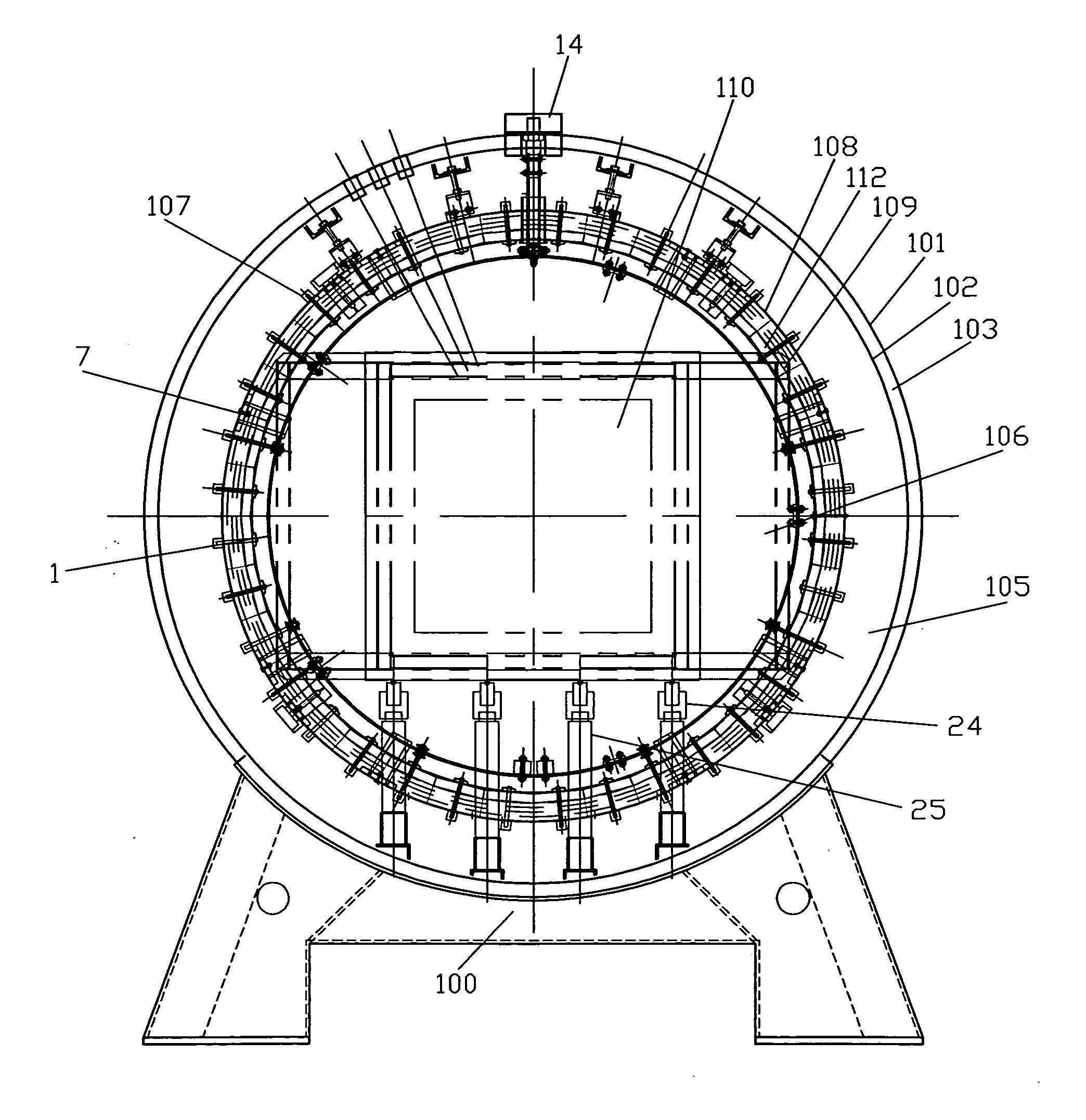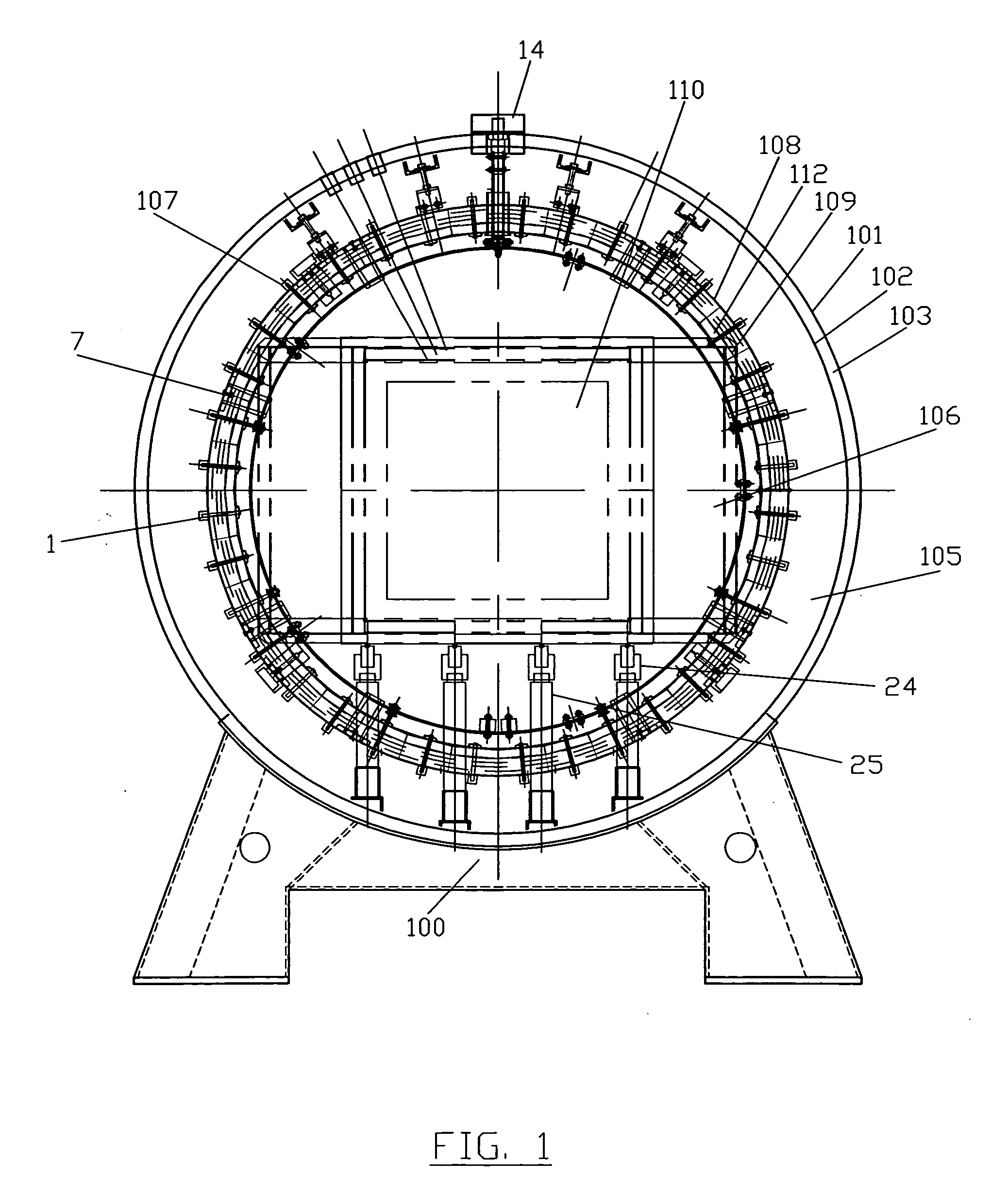20 Bar super quench vacuum furnace
a vacuum furnace and super-quench technology, applied in the direction of furnaces, muffle furnaces, heat treatment equipment, etc., can solve the problems of reducing affecting the heat transfer efficiency of the furnace, etc., to achieve the effect of improving the heat transfer efficiency
- Summary
- Abstract
- Description
- Claims
- Application Information
AI Technical Summary
Benefits of technology
Problems solved by technology
Method used
Image
Examples
Embodiment Construction
[0016]Referring to the drawings wherein like reference numerals refer to the same or similar elements across the multiple views, FIG. 1 depicts a partial front open door cross-section view (looking toward the door end) of a high temperature vacuum-high pressure quench heat treating furnace 100. Furnace 100 includes a hinged door 150 (shown in FIG. 2) which is opened to allow the insertion of a work piece to be heat treated, and then closed during the heat treating cycle. Outer furnace wall 101 and inner wall 102 of furnace 100 form the radial boundaries of a furnace water jacket 103 used for cooling outer wall 101 of the furnace. The outer chamber of furnace 100 thus is a cylindrical double walled, water-cooled vessel, and is typically manufactured from low carbon steel. All flanges are similarly machined. The width of water jacket 103 is approximately 1 inch maximum, with large oversized water inlet and exit ports (not shown) located around the chamber to allow for convenient perio...
PUM
| Property | Measurement | Unit |
|---|---|---|
| Velocity | aaaaa | aaaaa |
| Temperature | aaaaa | aaaaa |
| Pressure | aaaaa | aaaaa |
Abstract
Description
Claims
Application Information
 Login to View More
Login to View More - R&D
- Intellectual Property
- Life Sciences
- Materials
- Tech Scout
- Unparalleled Data Quality
- Higher Quality Content
- 60% Fewer Hallucinations
Browse by: Latest US Patents, China's latest patents, Technical Efficacy Thesaurus, Application Domain, Technology Topic, Popular Technical Reports.
© 2025 PatSnap. All rights reserved.Legal|Privacy policy|Modern Slavery Act Transparency Statement|Sitemap|About US| Contact US: help@patsnap.com



